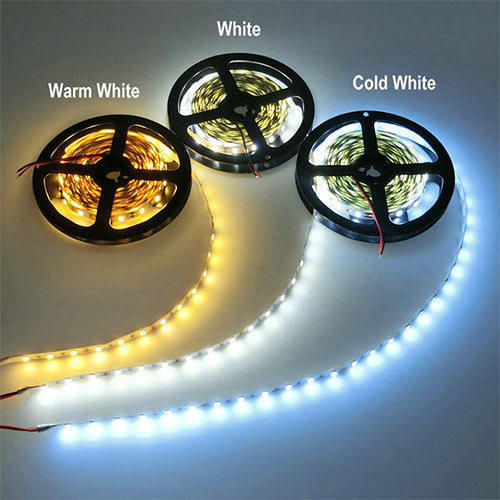
After we leant basics about Light Emitting Diodes, let's try a marginally more advanced practical task - about LED Strips - very popular solution for lighting purposes.
Such strips are sold in rolls of several meters generally - flexible bands with LEDs uniformly planted on one side and sticky tape on the other.
So that you can cut a piece of suitable length, fix it wherever you want and plug into suitable power supply. Generally these strips come in
varieties to be used with 12, 24 or 48 Volts.
How do that many diodes get supply from such a comparatively low voltage? Obviously they are not all connected in series (otherwise the strip couldn't be cut without severing the cicruit).
Looking closer, we found that strip consists of sections, each including several diodes in series with one small resistor. Sections themselves are connected in parallel and get full supply voltage each of them. One of practical consequences is that strip should be cut only between sections (there are special marks usually). See the following image for clarification.

So, assume we read on a package, that given LED strip consumes W Watts of power per meter (at power supply of U Volts),
then count that single meter consists of N
sections, next we count that each section contains K LEDs and single resistor of R Ohms (value is usually specified on resistor's top
surface) - we want to know what is the voltage drop on each of the LEDs, i.e. it's working or threshold voltage.
In addition to "laws" we have already mentioned, let it be reminded that power consumption in the device (or fragment of circuit) is calculated as a product of current through it and voltage which causes this current.
Numeric Example:
U = 12
W = 4.8
N = 20
K = 3
R = 150
This should yield 3 Volts on every of the LEDs.